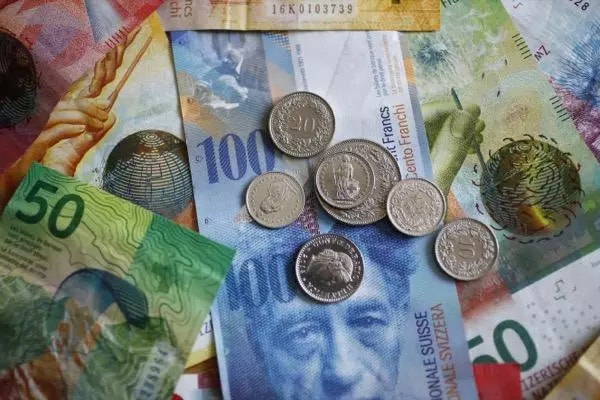Did you know there are about 180 different currencies used across the world today? Currency is the heartbeat of any economy. It allows us to buy food, trade goods, and save for the future without the confusion of bartering. It is a tool that builds trust and keeps businesses running smoothly. Some currencies are very powerful, while others struggle. Currently, the Kuwaiti Dinar is considered the world's strongest currency, while the Iranian Rial is often ranked among the weakest. But do you know which unique currency is famous for being a "safe haven" where investors hide their money during challenging times? It is also the only primary European currency that still uses the name "Franc". In this article, we'll take a look at the Swiss Franc and explore what makes it so special.
What is the currency of Switzerland?

The official currency of Switzerland is the Swiss franc. It is widely recognised by its code CHF, which stands for Confoederatio Helvetica Franc (Latin for Swiss Confederation Franc). Unlike most of its neighbours in Europe, Switzerland does not use the euro (€). It has kept its own independent currency, which is also the official legal tender in the small principality of Liechtenstein. One Swiss Franc is divided into 100 smaller units. Interestingly, the name of this subunit varies depending on the language spoken in the region: Rappen in German, Centime in French, and Centesimo in Italian.
What is the history of the Swiss Franc?

The history of the Swiss Franc is a fascinating journey from monetary chaos to becoming one of the world's most stable currencies. Before 1850, the country was a confusing mix of currencies, with local regions (cantons), cities, and even abbeys issuing their own money.
Here are the key milestones in its history:
- The Chaos (Pre-1850): Before the modern state was formed, over 800 different types of coins circulated in Switzerland. This made trading between villages extremely difficult.
- The Birth (1850): The new Swiss federal government passed the "Federal Coinage Act". This law established the Swiss Franc as the single monetary unit, replacing all the confusing local coins.
- The Latin Monetary Union (1865): Switzerland joined France, Belgium, and Italy to create a standardised currency zone. During this time, silver and gold coins from these countries were accepted freely across borders.
- World Wars Stability (20th Century): While neighbouring currencies collapsed or suffered from hyperinflation during the World Wars, the Swiss Franc remained strong due to Switzerland's neutrality.
- Gold Standard Era (Until 2000): For a long time, the Swiss Franc was directly backed by gold reserves. This formal link to gold was only removed from the constitution in the year 2000.
What are the denominations of CHF?

The Swiss Franc (CHF) is distributed in both coins and banknotes. These are issued by the Swiss National Bank (banknotes) and Swissmint (coins). The currency is known for its high value and sophisticated security features to prevent counterfeiting.
- Coins: There are seven coins currently in circulation. The smaller values are 5, 10, and 20 centimes. The larger values are ½ (half), 1, 2, and 5 francs. A unique fact is that the 10-centime coin has barely changed its design since 1879, making it the oldest coin design still in use today.
- Banknotes: There are six banknote denominations: 10, 20, 50, 100, 200, and 1000 francs. Each note has a different colour and size to help people distinguish them easil
(GK Fact: The 1000 Swiss Franc note is one of the most valuable banknotes in the world for a single bill. While many countries (like the US and those in the Eurozone) have stopped printing high-value notes to fight crime, Switzerland continues to print them because cash is still very popular there for making large purchases like cars or cattle.)
Comments
All Comments (0)
Join the conversation